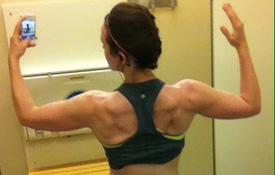Potassium... How are you getting enough?

jessicanorgaard
Posts: 4 Member
So this app is telling me I am constantly way below the recommended potassium levels. Is anyone hitting these targets? If so, how?
0
Replies
-
potatoes, bananas, oats0
-
Also tomatoes. Meats. Even coffee has about 100+ MG per cup. That's why I log coffee even though I drink it black.

Note that potassium may not be included in the nutrition database...so while the app doesn't register it, that doesn't mean you are not getting it. Do a Google search for potassium rich foods and then look up the levels yourself and add the full nutrition value to the database.0 -
Many of the entries in the data base do not include potassium amounts because the US FDA does not require that info on packages.
Forget about the potassium.0 -
I use potassium citrate.
Would be funny if I forgot the potassium like someone so helpfully suggested. It seems to have been what resolved my near constant testicular cramps.
Electros can be a B.0 -
I used to think it was impossible to hit my potassium goals everyday but since I've incorporated more fruits and veggies in my diet (through green smoothies), I actually go over 3500mg most days. Plant-based foods, chicken and dairy seem to have the highest amounts.0
-
Thanks all. I eat tons of veggies. I bet it is the quality of the items in the database not listing potassium like RodaRose mentioned.
Luckily as a female I am not concerned about testicular cramps. More heart health.0 -
I don't track it. Only time I care about potassium is if I have a high sodium day (like tonight) so I'll add some potassium salt to stuff. Like I added a bunch to my taco meat tonight because I knew it'd be high sodium from using packaged taco seasoning.0
-
You should try to track whole foods like veggies using the USDA entries that MFP entered (they have no asterisk), as opposed to the user entered foods. They are generally more accurate, have lots of different measurement options (like the extremely convenient 100 grams), and include potassium. Because I use those entries, I was able to see that my potassium is generally well above the MFP goal.
Usually the trick to finding them is plural plus "raw" (assuming you weigh raw, which is ideal anyway): "carrots, raw" or "broccoli, raw" or "potatoes-red, with skin, raw" are examples of the format.0 -
Folks don't always do the data entry correctly....perhaps it's not being included in the data input?0
-
Brussel sprouts are rich in potassium0
-
Raisins!0
-
lemurcat12 wrote: »You should try to track whole foods like veggies using the USDA entries that MFP entered (they have no asterisk), as opposed to the user entered foods. They are generally more accurate, have lots of different measurement options (like the extremely convenient 100 grams), and include potassium. Because I use those entries, I was able to see that my potassium is generally well above the MFP goal.
Usually the trick to finding them is plural plus "raw" (assuming you weigh raw, which is ideal anyway): "carrots, raw" or "broccoli, raw" or "potatoes-red, with skin, raw" are examples of the format.
This is smart0 -
Banana's are killing my Carbs/sugar!!0
-
The doctor told me to eat at least one banana a day. If not I would be on medication for it.0
-
Many of the entries in the data base do not include potassium amounts because the US FDA does not require that info on packages.
Forget about the potassium.
ThisJustygirl77 wrote: »Folks don't always do the data entry correctly....perhaps it's not being included in the data input?
And this
I don't think I've EVER hit mfp's potassium recommendation
0 -
Yams!0
-
Potassium can be a serious deficiency. I do track it and what I do is to look for entries that show a potassium listing. They all don't, but most foods have some. I find 0 to be a red flag that it isn't correct. I have had a deficiency so I pay attention to this. Biggest sources that people can do are V8 low sodium, swiss chard, and lima beans. Bananas are a myth, they have no more than a lot of other foods.0
-
You almost never need to track potassium. It is in most all common foods, and very few nutritional information panels ever list potassium. Its actually dangerous to get too much from suppliments, much more dangerous than sodium (which btw now with recent studies, we are unsure if sodium ever was anywhere near as dangerous as its made out to be even for heart conditions).0
-
jessicanorgaard wrote: »Thanks all. I eat tons of veggies. I bet it is the quality of the items in the database not listing potassium like RodaRose mentioned.
Luckily as a female I am not concerned about testicular cramps. More heart health.
You probably already are hitting it or coming close, especially if those veggies are frozen/canned/dried. A cup of chickpeas has 1750 mg--but most prepackaged entries don't have that information because it hasn't been on the label.
0 -
If you go to your home page and go to nutrients it tells you how much potassium you have used and what's left.0
-
-
I looked it up. Mine is bananas, raisins, broccoli,strawberies, sunflower seeds, yoghurt and several other things. Not soemthing ive ever foun dhad to get as part of a healthy varied diet.0
-
I'm not concerned about it now but when I was younger and played lots of sports I made sure I got enough. Severe muscle cramps are not fun. I get adequate amounts with food now so I don't track it.0
-
I ate this entire bag of veggies yesterday; it was delicious. 100 cal & 1120 mg potassium in total.

0 -
I was told by my doctor a bit ago and he said that bananas are full of potassium! So I have one a day and I don't need medication for it now.0
-
Do you have a diagnosed deficiency? If not you don't need to supplement.0
-
One can of spinach: 100 calories, 1700 mg Potassium.
One avocado: 250 calories, 900 mg Potassium.
One potato: 110 calories, 400 mg Potassium.
Bang. Done.0 -
I did have a few years ago! Doctor put me on medication and my blood tests got better at every test! Then I didn't want to take the meds that's when he told me about a banana a day! Now my blood tests come back ok for potassium.0
-
Swiss chard, spinach, mushrooms are very high in potassium.0
This discussion has been closed.
Categories
- All Categories
- 1.4M Health, Wellness and Goals
- 398K Introduce Yourself
- 44.6K Getting Started
- 261.1K Health and Weight Loss
- 176.4K Food and Nutrition
- 47.7K Recipes
- 233K Fitness and Exercise
- 461 Sleep, Mindfulness and Overall Wellness
- 6.5K Goal: Maintaining Weight
- 8.7K Goal: Gaining Weight and Body Building
- 153.4K Motivation and Support
- 8.4K Challenges
- 1.4K Debate Club
- 96.5K Chit-Chat
- 2.6K Fun and Games
- 4.7K MyFitnessPal Information
- 16 News and Announcements
- 19 MyFitnessPal Academy
- 1.5K Feature Suggestions and Ideas
- 3.2K MyFitnessPal Tech Support Questions




















